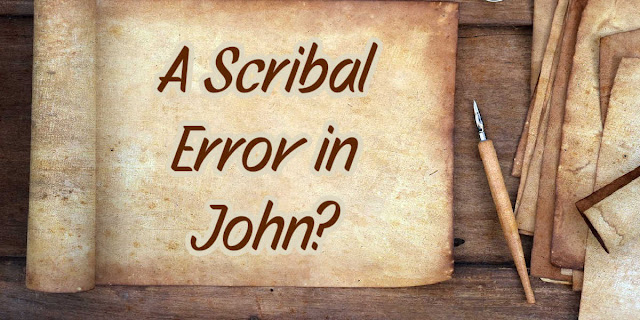The second "I am" statement in John requires a technical explanation.
When the King James Version was written, the oldest manuscripts of Scripture hadn’t been discovered. When they were discovered, they revealed that the manuscripts used to translate the KJV included some scribal additions.(1) None of these minor additions altered the message of Scripture, but newer translations exclude them or show them in brackets.(2)
The story of the woman caught in adultery (John 7:53-8:11) is not found in the oldest, most accurate manuscripts of John, and the story seems to interrupt Christ's conversation with the Pharisees that starts in John 7 and resumes in 8:12. It was probably added by a scribe, not recorded by John.(3)
This isn’t a problem.
Even though it was a scribal addition, God obviously wasn't concerned about its inclusion in Scripture, or He’d have arranged an earlier discovery of the oldest manuscripts. But He also wanted the Dead Sea Scrolls found.
Finding these older manuscripts revealed a few insignificant scribal errors. But, more importantly, it confirmed the detailed accuracy of Scripture as a whole.
No other ancient document has so many hand-written manuscripts that are so closely identical. God's Word shines far above them all!(4)
With that in mind, let me share Christ's words in John 8:12: “I am the light of the world. Whoever follows me will never walk in darkness, but will have the light of life.”
The Light of the World has made sure that the light of His Word shines brightly so His people never need to walk in darkness.
(1) The older manuscripts of the New Testament were not part of the Dead Sea Scrolls, but I encourage you to read about the discovery of Dead Sea Scrolls which contained some of the oldest manuscripts of the Old Testament. This will give you confidence that God is concerned about the integrity of His Word. See Living Dead Sea Scrolls.
(2) These articles will give additional details:
Does John 7:53–8:11 belong in the Bible?
Why are the Newer Translations of the Bible Missing Verses?
Regarding the changes from the KJV: There's a very popular false teaching that claims all new translations were updated removing parts of God's Word. Not true. The newer translations were "back-dated" to represent the older, more accurate manuscripts. And nothing removed softens or changes the truths of Scripture. To read more about this false teaching see Is the King James Version the Best English Translation?
(3) The story of the woman caught in adultery may have been a true story handed down by word of mouth, and a particular scribe decided to include it in Scripture.
There's some mystery involved, but here's what we know:
✔ It doesn't conflict with any teachings in Scripture.
✔ God chose to have it included in the best manuscripts available for many years.
✔ God preserved older manuscripts so they could be compared and these scribal additions identified. While this showed that this story and a few others weren't in the original manuscripts, it also proved how closely the newer manuscripts matched the older manuscripts. Most ancient manuscripts would have had significant differences because they were hand-copied for hundreds of years.
As I said, there's some mystery involved.
(4) Read about the fact that no ancient book can compare to the Bible for proven accuracy: When the Bible Is Tested for Accuracy.
Bible Love Notes



No comments:
Post a Comment